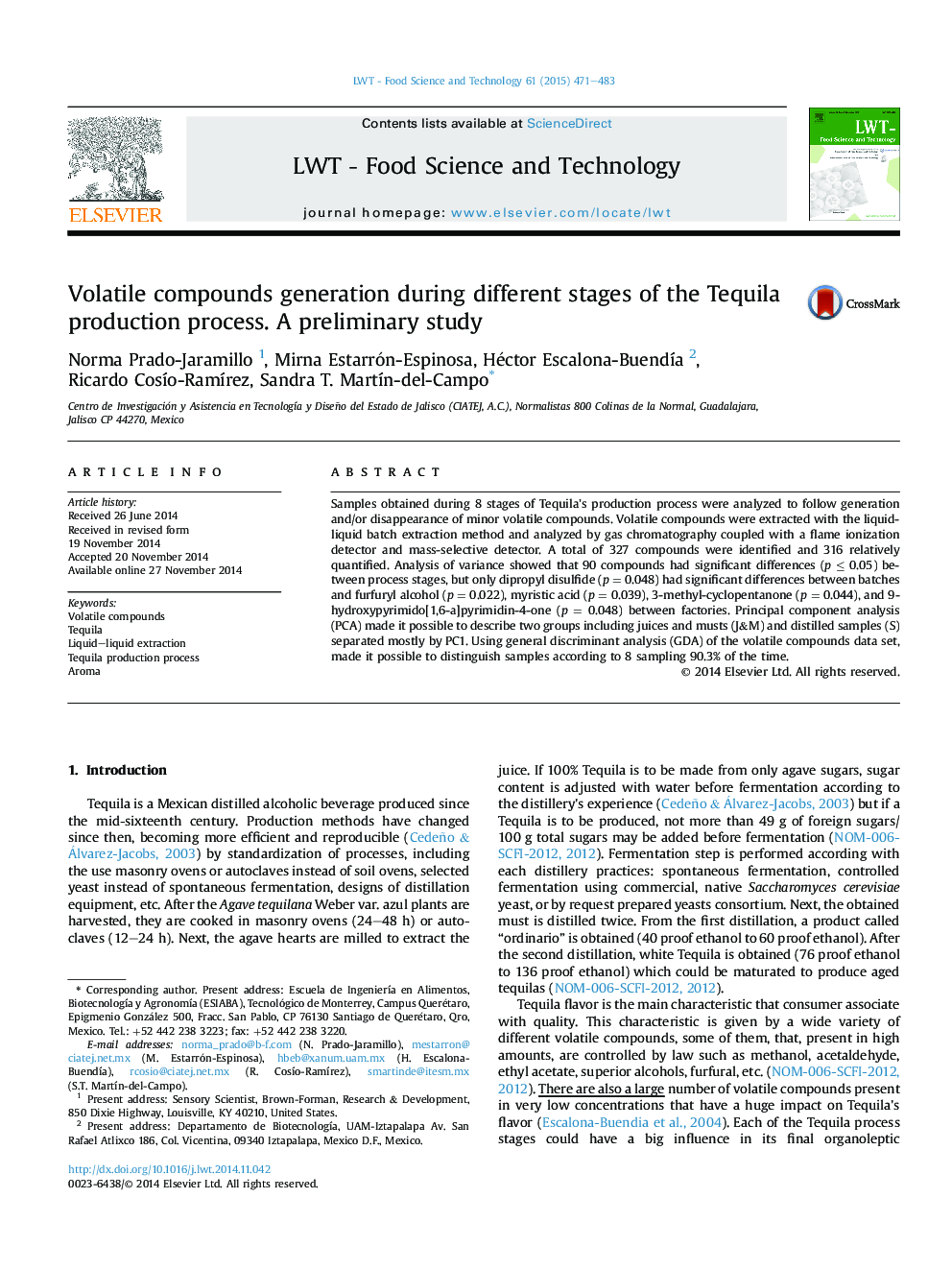| Article ID | Journal | Published Year | Pages | File Type |
|---|---|---|---|---|
| 6401182 | LWT - Food Science and Technology | 2015 | 13 Pages |
â¢We followed aroma compounds formation throughout 8 steps of Tequila production.â¢Samplings were performed at industrial scale.â¢Minor aroma compounds were analyzed by gas chromatography.â¢Statistical analysis showed differences between process steps.
Samples obtained during 8 stages of Tequila's production process were analyzed to follow generation and/or disappearance of minor volatile compounds. Volatile compounds were extracted with the liquid-liquid batch extraction method and analyzed by gas chromatography coupled with a flame ionization detector and mass-selective detector. A total of 327 compounds were identified and 316 relatively quantified. Analysis of variance showed that 90 compounds had significant differences (p â¤Â 0.05) between process stages, but only dipropyl disulfide (p = 0.048) had significant differences between batches and furfuryl alcohol (p = 0.022), myristic acid (p = 0.039), 3-methyl-cyclopentanone (p = 0.044), and 9-hydroxypyrimido[1,6-a]pyrimidin-4-one (p = 0.048) between factories. Principal component analysis (PCA) made it possible to describe two groups including juices and musts (J&M) and distilled samples (S) separated mostly by PC1. Using general discriminant analysis (GDA) of the volatile compounds data set, made it possible to distinguish samples according to 8 sampling 90.3% of the time.
